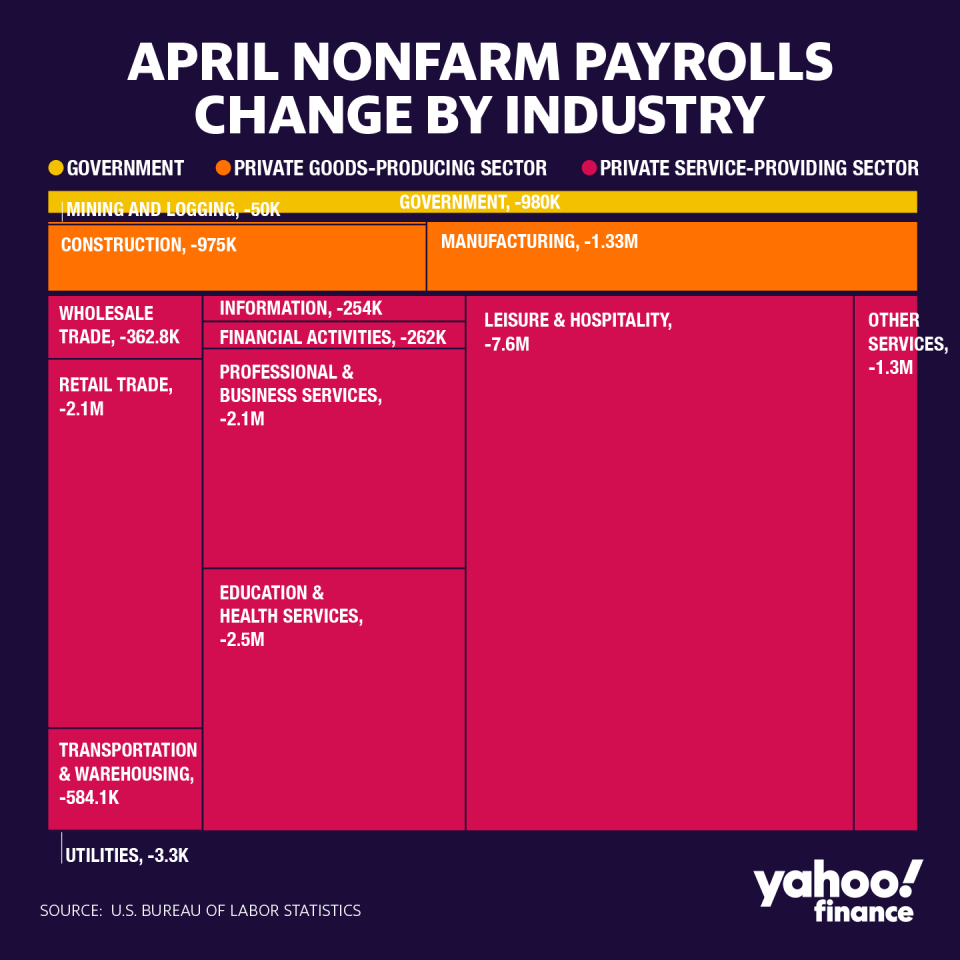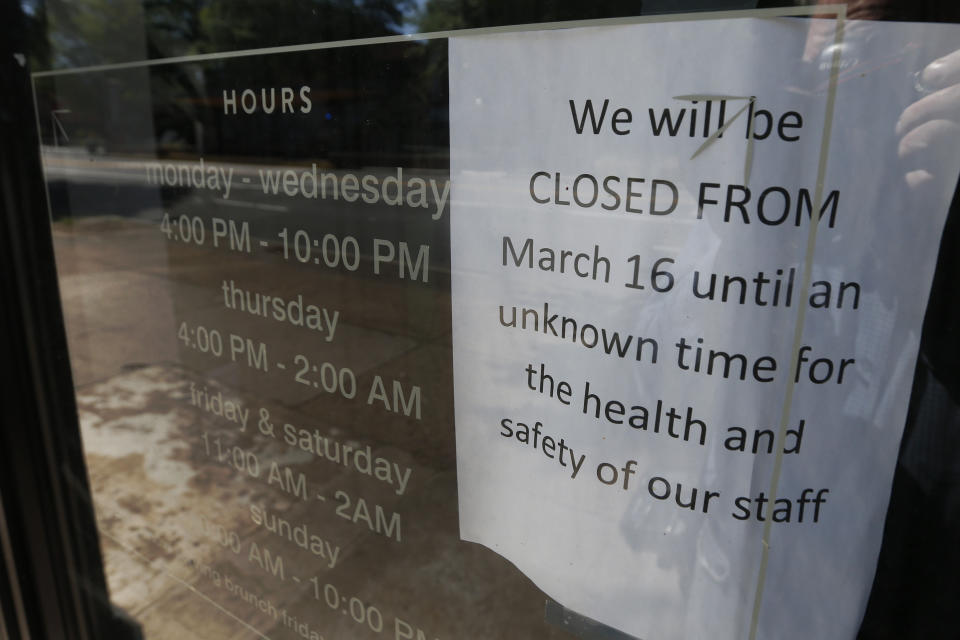Why the unemployment rate could be 5 percentage points higher
The U.S. economy lost a never-before-seen 20.5 million payrolls in April, bringing the unemployment rate to 14.7%.
But the Bureau of Labor Statistics says the unemployment rate is likely higher than the official numbers it released because of how the household survey interviewers counted.
“The plunge in payrolls ought to have lifted the unemployment rate to almost 20%, other things equal,” wrote Pantheon’s chief economist Ian Shepherdson in a note Friday.

For the past two months, the BLS instructed household survey interviewers to ask questions in a slightly different way to account for the unique situations borne out of the coronavirus crisis.
People not working because of coronavirus were supposed to be classified as “unemployed on temporary layoff.”
“However, it is apparent that not all such workers were so classified,” the BLS wrote in the release.
Instead of this classification, many people not working due to the coronavirus were classified as “employed but absent at work,” which is what surveyors are supposed to put when a person isn’t coming to work because of vacation, illness, bad weather, a labor dispute, or “other reasons.”

This “other reasons” category, according to the BLS, was where many unemployed people were miscounted, skewing the unemployment rate down.
“If the [miscounted] workers had been classified as ‘unemployed on temporary layoff,’ the overall unemployment rate would have been almost 5 percentage points higher than reported (on a not seasonally adjusted basis),” the BLS wrote.
The agency can – and frequently does – revise payroll numbers it releases; February numbers were adjusted in the April release. But for surveys, its default policy is to go with whatever numbers come up.
That’s why the agency is sticking to a number it doesn’t think is totally accurate.
“According to usual practice, the data from the household survey are accepted as recorded,” the agency wrote. “To maintain data integrity, no ad hoc actions are taken to reclassify survey responses.”

After two straight months of survey issues, there’s no guarantee that the next survey will have solved this, making the unemployment rate a less-than-useful tool for labor market observers.
"The problem of misclassification likely will persist for the foreseeable future so the headline unemployment rate will not be a useful guide to the real state of the labor market,” wrote Shepherdson. “The payroll and jobless claims numbers are more reliable.”
Labor market damage is on a level last seen in the late 1940s. Though horrific, it was slightly better than analysts had predicted and S&P 500 futures spiked after the news.
--
Ethan Wolff-Mann is a writer at Yahoo Finance focusing on consumer issues, personal finance, retail, airlines, and more. Follow him on Twitter @ewolffmann.
Frontier Airlines adopts and quickly rescinds $39 to $89 fee for social distancing
Warren Buffett explains the simple reason the U.S. will never default on its debts
5 key ways healthcare could change post-coronavirus: analysts
Here's a list of CEOs taking pay cuts amid the coronavirus crisis
Follow Yahoo Finance on Twitter, Facebook, Instagram, Flipboard, LinkedIn, and YouTube.